The assembled MURI team consists of a core applied physics and mathematics (
Christodoulides and Kottos) and experimental
characterization and fabrication groups (
Abouraddy, Vardeny and Thomas). Other activities also include assembly of new polymers
and quantum dots (Tsukruk). The MURI team will work in close collaboration with other AFRL units to transition expertise
and knowhow.
The effort of the MURI team will involve fundamental studies of PT-symmetric effects in optics, design and modeling of such
pseudo-Hermitian photonic structures, and exploration of PT concepts in other physical settings beyond optics.

 Demetrios N. Christodoulides
Demetrios N. Christodoulides:
CREOL, The College of Optics and Photonics, University of Central Florida
Demetri Christodoulides is the Cobb Family Endowed Chair and Pegasus Professor of Optics at CREOL-the College of Optics and
Photonics of the University of Central Florida. He received his Ph.D. degree from Johns Hopkins University in 1986 and he
subsequently joined Bellcore as a post-doctoral fellow at Murray Hill. Between 1988 and 2002 he was with the faculty of
the Department of Electrical Engineering at Lehigh University. His research interests include linear and nonlinear optical
beam interactions, synthetic optical materials, optical solitons, and quantum electronics. He has authored and co-authored
more than 250 papers. He is a Fellow of the Optical Society of America and the American Physical Society. In 2011 he received
the R.W. Wood Prize of OSA.
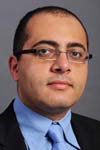 Ayman F. Abouraddy
Ayman F. Abouraddy:
CREOL, The College of Optics and Photonics, University of Central Florida
Ayman F. Abouraddy received the B.S. and M.S. degrees from Alexandria University, Alexandria, Egypt, in 1994 and 1997, respectively,
and the Ph.D. degree from Boston University, Boston, MA, in 2003, all in electrical engineering. In 2003 he joined the Massachusetts
Institute of Technology (MIT), Cambridge, as a postdoctoral fellow working with Prof. Yoel Fink (Materials Science & Engineering)
and Prof. John D. Joannopoulos (Physics), and then became a Research Scientist at the Research Laboratory of Electronics
in 2005. At MIT he pursued research on novel multi-material optical fiber structures, photonic bandgap fibers, nanophotonics,
fiber-based optoelectronic devices, and mid-infrared nonlinear fiber optics. He has also been engaged in investigating techniques
that lead to sub-diffraction-limited resolution in optical microscopy and lithography. He is the coauthor of more than 45
journal publications and 80 c0nference presentations, holds seven patents, and has three patents pending. His research also
encompasses quantum optics and quantum information processing. He joined CREOL, The College of Optics & Photonics, at the
University of Central Florida as an assistant professor in September 2008 where he has since established facilities for
fabricating new classes of polymer and soft-glass fibers for applications ranging from mid-infrared optics to solar energy
concentration. Together with Prof. Bahaa Saleh, he established a quantum optics laboratory that carries out research testing
the foundations of quantum mechanics and implementing optical realizations of quantum computation.
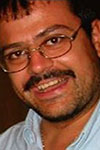 Tsampikos Kottos
Tsampikos Kottos:
Physics Department, Wesleyan University
Tsampikos Kottos received his PhD in theoretical solid-state physics from the University of Crete in 1997. In 1997 he received
a US European Office of Air Force Research and Development Fellowship. In the same year, he received the Feinberg Fellowship
of the Weizmann Institute of Science, Israel where he stayed for a period of two years as a postdoctoral associate. In 1999
he moved to Germany as a postdoctoral research fellow at the Max Planck Institute for Dynamics and Self-Organization in
Göttingen. In 2005 he has become an Assistant Professor at Wesleyan University, USA where in 2010 he was elected Associated
Professor. He is the recipient of the 2006 international Pneumatikos Award given to outstanding young scientists (below
forty years old) working in the fields of Nonlinear Physics, Mathematical Physics and Nonlinear Disordered Systems. In 2013
he was awarded the Douglas J. and Midge Bowen Bennet Endowed Chair awarded from Wesleyan University for a five-year term
to “a newly tenured associate professor exhibiting exceptional achievement and evidence of future promise”. Dr. Kottos has
published more than 100 papers in non-linear and mathematical physics, optics, mesoscopics and computational modeling of
complex systems (H-index:31). He wrote a number of reviews in graph theory and wave chaos while he disseminated his research
in more than 100 presentations at international conferences and inter-university colloquia.
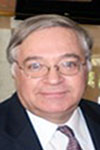 Zeev Valentine (Valey) Vardeny
Zeev Valentine (Valey) Vardeny:
Department of Physics and Astronomy, University of Utah
Professor Vardeny is an experimental physicist interested in transient and steady state optical, electronic and spintronic properties
of organic semiconductors in the time domain from femtoseconds to minutes. In his laboratory Prof. Vardeny synthesizes a
variety of semiconducting polymers and grows various single crystals from pi-conjugated oligomers and molecules. Using a
variety of pulsed laser excitations he studies the transient response of photoexcitations in doped and undoped semiconducting
polymer films, molecular organic crystals, fullerenes, single walled nanotubes and dielectric and metallic photonic crystals.
The transient response also includes laser action in the form of amplified spontaneous emission, random lasers, and lasing
in fabricated microcavities, including microring, microdisk, opal photonic crystals and asymmetric cavities that support
chaotic ray behavior. The transient dynamic investigations are complemented using steady state optical measurements such
as absorption, emission and photomodulation spectroscopies, as well as optical detected magnetic resonance, photoconductivity
and Raman scattering spectroscopies. In addition, the charge and spin injection from external electrodes into organic semiconductors
is also investigated using a variety of metallic, ferromagnetic, and half metallic electrodes. Also being studied are the
nonlinear optical spectra of these materials using the technique of four-wave-mixing, Z-scan and two-photon-absorption.
The optical studies also include a variety of organic photonic crystals made out of polymers and oligomers infiltrated into
synthetic opals, as well as 2D and 3D metallic photonic crystals. On a more applicative note, solid-state devices made out
of the organic semiconductors, such as field-effect-transistors, organic light emitting diodes, organic photovoltaic cells,
and spin-valve devices are engineered, fabricated and tested in the laboratory.
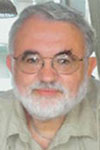 Vladimir Tsukruk
Vladimir Tsukruk:
School of Materials Science and Engineering, Georgia Institute of Technology
Vladimir Tsukruk is a Professor in the School of Materials Science and Engineering. Before joining Georgia Tech in July 2006,
he was a Professor of Materials Science and Engineering at Iowa State University, Ames. He also served as Chair and Professor
of Materials Science and Engineering in the College of Engineering & Applied Sciences at Western Michigan University from
1996-1999. He conducts research in the field of fabrication and structural characterization of molecular films since 1987.
He has extensive experience in organic and polymeric materials and molecular films from polymers. He is an expert in microstructural
analysis of polymeric materials. He has conducted investigations of LB films and self-assembled monolayers from amphiphilic
polyimides, rod-like polymers, liquid crystalline polymers, alkylsilanes, dendrimers, biopolymers, and lipids.
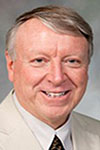 Edwin L. (Ned) Thomas
Edwin L. (Ned) Thomas:
Materials Science and NanoEngineering, Rice University
Edwin L. “Ned” Thomas is the William and Stephanie Sick Dean of the George R. Brown School of Engineering. He holds joint appointments
in the Departments of Materials Science and NanoEngineering and Chemical and Biomolecular Engineering and collaborates with
scientists and engineers in the Richard E. Smalley Institute for Nanoscale Science and Technology at Rice. Thomas is a materials
scientist and mechanical engineer and is passionate about promoting engineering leadership and student design competitions.
His research is currently focused on using 2D and 3D lithography, direct-write and self-assembly techniques for creating
metamaterials with unprecedented mechanical and thermal properties. Dr. Thomas and his students carry out research on photonics,
phononics, interference lithography and mechanical behavior of microtrusses, polymer physics and engineering of the mechanical
and optical properties of block copolymers, liquid crystalline polymers, and hybrid organic-inorganic nanocomposites. One
area of special interest is photonics and the fabrication of polymeric photonic crystals using self-assembly, especially
with block copolymers, and holographic interference lithography.

